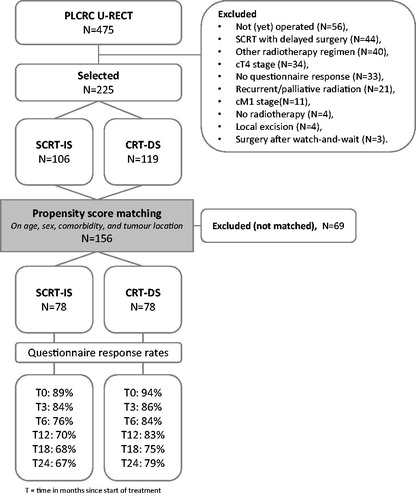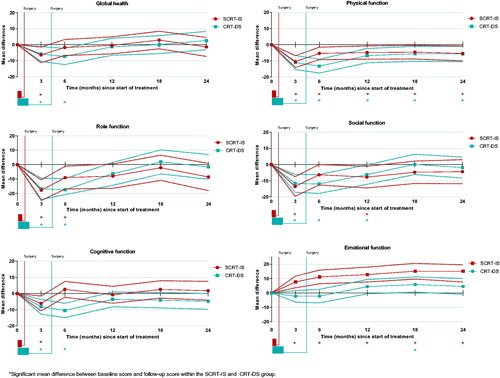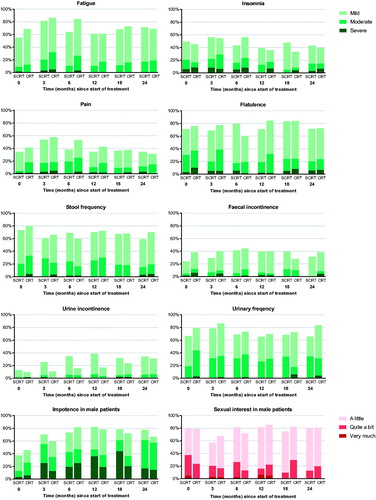Figures & data
Figure 1. Flowchart of selected patients within the prospective data collection initiative on colorectal cancer (PLCRC) Utrecht rectal cancer (U-RECT) cohort treated with short-course radiotherapy with immediate surgery (SCRT-IS) or chemoradiation with delayed surgery (CRT-DS).

Table 1. Baseline characteristics before and after propensity score matching of rectal cancer patients treated with neoadjuvant short-course radiotherapy with immediate surgery (SCRT-IS) or neoadjuvant chemoradiation with delayed surgery (CRT-DS).
Table 2. Differences in quality of life domains of the EORTC QLQ-C30 questionnaire between neoadjuvant short-course radiotherapy with immediate surgery (SCRT-IS) and neoadjuvant chemoradiation with delayed surgery (CRT-DS) in a matched cohort of rectal cancer patients.
Figure 2. Within-group changes in quality of life domains of the EORTC QLQ-C30 in a matched cohort of rectal cancer patients receiving short-course radiotherapy with immediate surgery (SCRT-IS) or chemoradiation with delayed surgery (CRT-DS). Scores are presented in mean differences with the 95% confidence intervals (dashed lines). Duration of neoadjuvant treatment and approximate timing of surgery are indicated in the boxes below the graphs and the line respectively.

Figure 3. Categories of symptom severity and sexual interest of the EORTC QLQ-C30 and QLQ-CR29 in the short-course radiotherapy with immediate surgery (SCRT-IS) group and chemoradiation with delayed surgery (CRT-DS) group in a matched cohort of rectal cancer patients. For symptoms, a higher proportion represent more patients with symptoms. For sexual interest, a higher proportion represent more male patients with sexual interest.

Table 3. Results of univariable logistic regression models on the association between treatment strategy and symptoms (moderate/severe versus none/mild) and sexual interest (no versus yes) at 12 and 24 months after the start of treatment in a matched cohort of rectal cancer patients.
